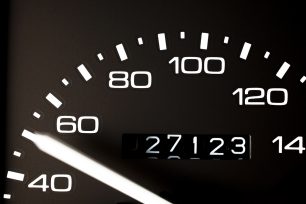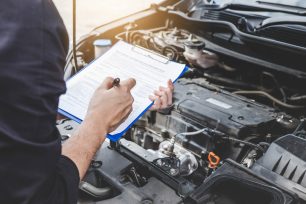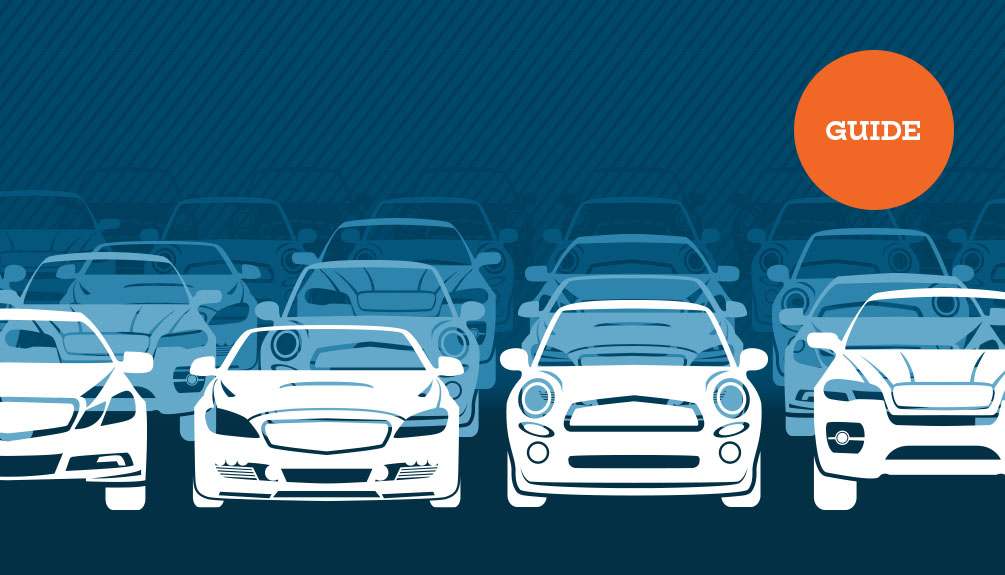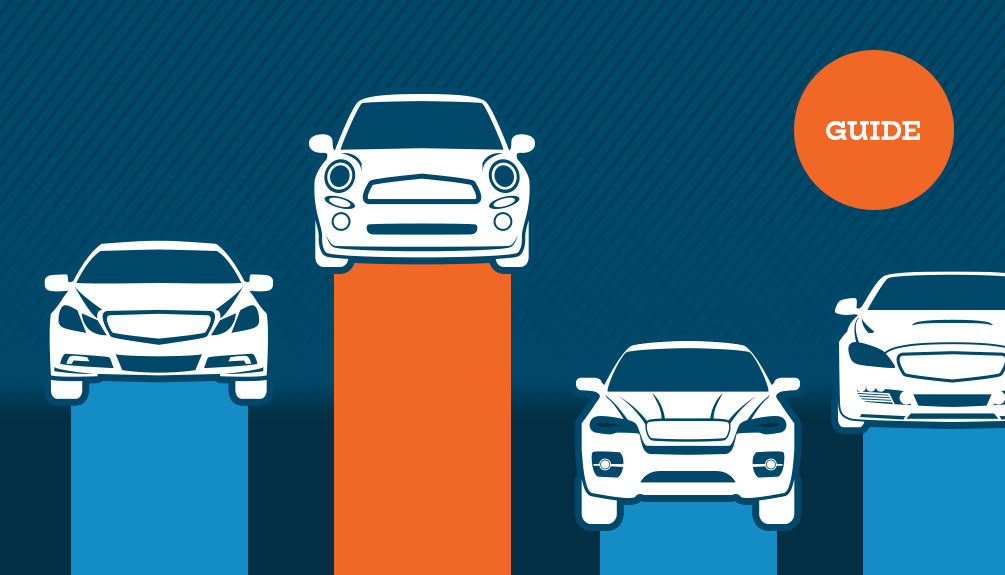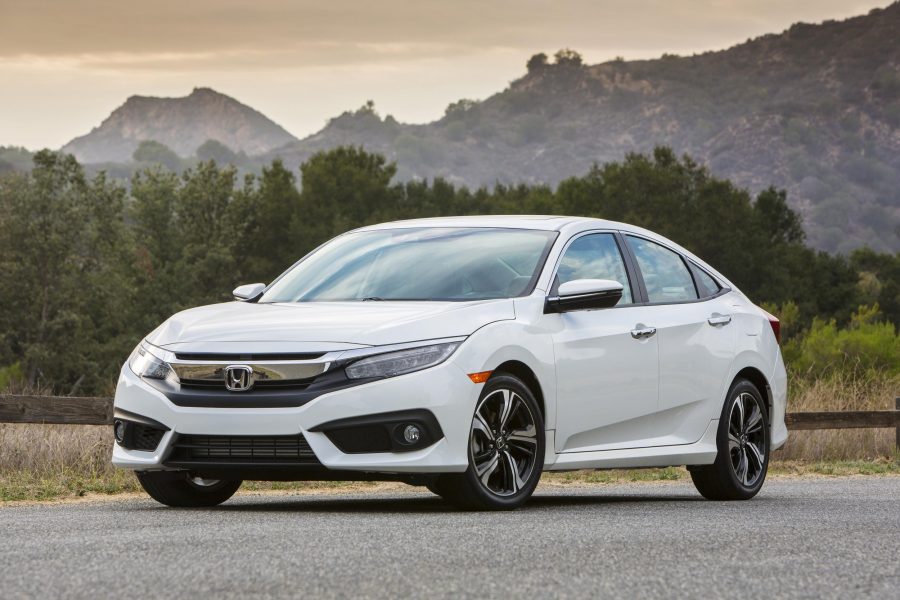While buying a used car is often a smart financial decision, some consumers don’t want to sacrifice peace of mind by purchasing a car that’s been owned by someone else. That peace of mind is also a big reason car buyers decide to purchase an extended car warranty when they go car shopping. Extended warranties are exactly what they sound like - an extension of the factory warranty that comes standard with every new car sold today. For a single one-time fee, you can extend your coverage for a few years beyond when the normal auto warranty expires.
It's a tempting offer, one that looks even better when the cost of it gets rolled into a monthly payment with your car loan. For a few dollars more a month, why shouldn't a car buyer splurge on it?
But there's more to it than that. Many buyers of these warranties eventually realize they spent more on the warranty than they got out of it.
You'll want a full understanding before you make any decisions about getting an extended warranty. To help, we've gathered up the facts to help you decide if extended car warranties are worth it.
What is an Extended Car Warranty?
An extended warranty - also known as a vehicle service contract - is an agreement brokered between you and the warranty provider over who pays for car repair costs to your vehicle during a stated window of time.The premise is simple. You'll pay upfront for the warranty, and if anything happens to the car during the period of coverage, the warranty provider should pay all costs, less any deductible.
That's the idea of it, at least. In reality, the warranty provider may not cover every sort of unexpected repair your car might need. They also might reduce coverage for certain repairs as the car continues to depreciate or as mileage accumulates. Each extended warranty is different in this regard, so you'll need to carefully read the fine print. The last thing you want is to get in a dispute with the provider over who is paying to fix your car when it's down and out on the side of the road.
Manufacturer Warranty Vs. Extended Warranty: What Does Each Warranty Cover?

Every new car comes standard with some sort of manufacturer's warranty. There's usually two types: the bumper-to-bumper warranty and the powertrain warranty. The latter one covers the engine, transmission, drive system, and other critical mechanical components. The bumper-to-bumper takes care of anything that doesn't fall into that category. In the event of a mechanical breakdown, such as your radio or air conditioning failing, or a turn-indicator relay burns out, or the seat motors freeze up - all that should be covered by the bumper-to-bumper warranty. Wear and tear stuff like brake rotors, brake pads, tires, and oil changes are not covered by either warranty.
Most manufacturers offer bumper-to-bumper warranties for three years or 36,000 miles, though this may vary. Powertrain warranties also vary but are typically good for five years or 60,000 miles. Hyundai and Kia notably offer 10 years or 100,000 miles on their powertrains, which is the best in the business. Other automakers like Toyota, Honda, and Ford offer 5 years or 60,000 miles, whichever occurs first.
Extended warranties kick in once the factory warranty expires. They also make distinctions between bumper-to-bumper and powertrain coverage, but they may not be as comprehensive as the factory warranty. The provider should offer a list of inclusionary and exclusionary items that spells out what is and isn't covered by these warranties. Consider it a must-read before buying any warranty.
Again, we can't stress enough the importance of reading the fine print that comes accompanies any extended warranty, so you can know exactly what constitutes a covered repair should your car break down.
Extended Car Warranty: New Vs. Used Cars
New cars are covered by the manufacturer’s warranty . However, if you anticipate owning your new car for longer than the duration of the manufacturer’s warranty , you can buy an extended car warranty during your purchase process. Buying an extended warranty on a new car is often less expensive than purchasing one for a used car .Used cars do not come with a warranty, unless you are purchasing a certified pre-owned (CPO) vehicle. Therefore, an extended warranty can provide necessary protection against costly repairs. Extended warranties can even be found on high-mileage vehicles with 100,000 miles or more. However, cars older than 10 years old or those that have over 200,000 miles may not qualify.
Extended Warranty Cost and Providers
Some extended auto warranties are available through the manufacturer, while most come from a third party such as the car dealership , an auto club like AAA, or another service provider.When you're purchasing a new or used vehicle from the dealership, the salesman will likely offer you an extended warranty. If you choose to buy it, the price of the service contract will be bundled into the financed amount of your auto loan. You can also make a larger down payment or opt to pay annually. This is convenient, but it will also cost you: a larger amount will need to be financed, which in turn results in paying more interest over the life of the loan.
As for a dollar value, expect to shell out between $1,000 and $3,000 for an extended warranty plan. The exact pricing depends on factors including the level of coverage and the amount of your deductible, as well as the age, make, and model of your car.
Popular third-party warranty companies include Carchex, CarShield, and Endurance. AAA also offers a limited extended warranty that goes beyond their usual roadside assistance services like tire changes, towing services, and battery jumps. The national used-car dealer Carmax offers a generous extended warranty covering the cars they sell. (Check out our guide that details CarMax warranty options.)
Best Extended Warranty Companies
Endurance

One of the most popular and best rated extended warranty companies is Endurance. Endurance handles its own claims and is known for having great customer service. Endurance offers 24/7 claims processing, 24-hour roadside assistance, and the ability to choose from almost every dealership and a wide network of 350,000 certified mechanics. You can also choose between new and used parts for repairs. Endurance pays claims upfront to the repair facility. Endurance offers six plans to choose from with varying levels of coverage. The prices range from $350 to $700 a year and it has a $100 deductible for repairs. The cost varies by vehicle, term length, and level of coverage. Endurance will provide a warranty on cars as old as 1958 that have up to 200,000 miles. It’s important to note that Endurance is not available in California.
CARCHEX

CARCHEX is another popular choice for an extended warranty provider. CARCHEX warranty plans feature 24/7 emergency roadside assistance, trip-interruption, gas delivery, and lost key or lockout assistance. CARCHEX allows you to take your car to any licensed repair facility and both new or used parts can be used for repairs. CARCHEX pays claims directly to repair facilities, which means you don’t have to pay for the repairs yourself and wait to be reimbursed. CARCHEX will not cover vehicles that are older than 20 years old or that have more than 125,000 miles on the odometer. Each policy is backed by a 30-day money-back guarantee. CARCHEX offers a lot of warranty plans that are divided into five tiers of coverage. CARCHEX offers five coverage tiers (listed below) with several plan options under each tier – a total of 16 different warranty plans which vary in terms of warranty length and coverage level.
Carshield

CarShield perhaps has the most recognizable advertisements thanks to its celebrity endorsers like Ice-T. CarShield has over 30 coverage options to choose from that cover vehicles with less than 300,000 miles. CarShield pays claims directly to repair facilities, and repairs can be done at any dealership or licensed repair facility. It provides 24/7 roadside assistance, towing services, and some plans include free rental car reimbursement. The cost of plans can vary depending on coverage, but low or zero deductible plans are available.
Extended Warranty Benefits
The biggest benefit is the peace of mind you get when driving an older, high-mileage car that isn't covered by any sort of factory warranty . You can rest easy knowing that if anything were to fail on your car, you'd likely only be liable for the deductible . The warranty provider would take care of the rest, often paying the repair facility directly. That means you won't have to scramble to pay staggering repair bills should anything serious fail on your car.To fit your budget and needs, extended warranty providers often offer various coverage plan options so you can get just the right amount of protection. They may also come with perks like towing, rental car reimbursement, and even roadside assistance. The better providers will let you choose your repair shop as well.
Similar to car insurance, an extended warranty is there when you need it but invisible otherwise.
Extended Warranty Drawbacks
The biggest issue with the extended warranty is the general reliability of today's cars. Studies have shown that most buyers of extended warranties spend far more on the warranty than they get out of it in saved auto repair costs; many don't end up using the warranty at all.Even if you do need to use the warranty, you'll still have to pay a deductible, tempering potential savings. And sometimes coverage might not extend to certain items. If one of these exclusionary parts fails, you'll be on your own to pay for these often expensive repairs.
Not all extended warranty protection plans are transferable, either. This means that if you choose to sell your car or gift it to a family member, the new owner may not enjoy the benefit of warranty coverage. This could be important if you were planning on giving your car to your children or selling it to a friend.
You also may not be able to transfer a warranty to a new car should you choose to replace your current one. If you aren't planning on keeping your car for the long haul, an extended warranty might not be the best option.
Certified Pre-Owned Car Warranties
If you want a used car that comes with warranty coverage beyond what’s typically covered by the manufacturer’s new car warranty, another option is a certified pre-owned (CPO) car. CPO cars are low-mileage, accident-free used cars that are usually less than seven years old. The vehicle has been reconditioned to meet strict manufacturer standards and has passed a rigorous multi-point inspection. CPO cars are backed by an extended car warranty from their original manufacturer and come with added perks like roadside assistance and loaner car access.Should I Buy an Extended Warranty for My Car?
The truth is that most car owners are better off without it. Instead of spending a couple thousand dollars for a warranty you may or may not use, you're better off socking away that cash into a rainy-day fund in case your car does incur a costly repair . For all the peace of mind that a warranty provides, it doesn't beat having an extra bit of money in the bank that's there if you need it but also there if you don't.Rather than an extended warranty, you can allay your fears of future car trouble by buying a car with a proven track record of reliability. Finding that data isn't hard to do: with a bit of searching you can quickly learn what are some of the most reliable cars on the market. Consumer Reports, for instance, is famous for their comprehensive reliability data of nearly all cars, trucks, and SUVs on the market. iSeeCars has also conducted numerous studies concerning the most reliable and longest-lasting cars to help you find a reliable model.
What Isn’t Covered in An Extended or Factory Warranty?
When your salesperson tells you that every new car comes with a bumper-to- bumper warranty , it always invokes the thought, “Wow, I won’t have to pay for a single thing on this car for at least three years !” There are some things you will need to purchase for your vehicle within that timeframe; and some of them can be rather pricey. These are the five things your manufacturer’s car warranty or extended typically won’t cover.- Fluids
Some other fluids that need to be changed at regular intervals are your transmission fluid, engine coolant (anti-freeze), brake fluid (yes, brake fluid can break down just like any other fluid), and, if applicable, power steering fluid and gear oil. Intervals on all of these items can vary drastically from vehicle to vehicle, so make sure you check your owner’s manual or with your dealership to find the appropriate time or mileage intervals for your vehicle.
- Filters
Your transmission filter, if your vehicle has one (some don’t) will probably only need replaced once, if at all, during your warranty time. But since it is one of those things you’ll pay for, we’ve included it. Another is your fuel filter. This one should be replaced around every 15,000 miles on average. PCV Valves are commonly mistaken for maintenance items – they aren’t. They are emissions items and should be covered under the emissions section of your warranty if yours should ever fail.
- Brake Lining

This is one of those areas you want to pay attention to in your warranty. Most manufacturers will cover rotors, drums, calipers, wheel cylinders, hardware, boosters, master cylinders, and brake lines. Notice anything missing? That would be the brake lining. This is more commonly referred to as brake pads and brake shoes. It’s the one section of your brakes that is considered wearable and you will have to pay for them when you need them. The reason we say to pay attention to this section is because some (very few, but there are some) warranties will not cover drums or rotors; these can get expensive so be sure to ask if you’re not quite clear.
- Rubber
- Accidental, or Intentional, Damage

This one is a no-brainer. Basically, if you damage your vehicle in any way, whether intentionally or by accident, you’ll be dealing with your insurance company, not your dealership. There are some exclusions to this rule, though. Some manufacturers offer warranty protection on things like glass and paint for rock chips and cracks. Others will guarantee upholstery against staining.
The Bottom Line
The perceived benefit of an extended warranty is the safety net of having someone else cover your car's cost of repairs . But instead of spending up to $3,000 (or possibly more) on the vehicle protection an extended warranty provides, you can take very simple steps to protect yourself against unexpected repairs without spending big money upfront . Research and buy one of the most reliable cars, save a bit of money for an emergency fund to cover repairs if necessary, and never neglect to do routine maintenance . Together, these actions lower the risk for pricey repairs while also protecting against anything unexpected.Check out our other helpful car buying resources:
- iSeeCars Best Cars Rankings
- How to Buy a Used Car
- Car Leasing Vs. Buying: Which is Better?












































